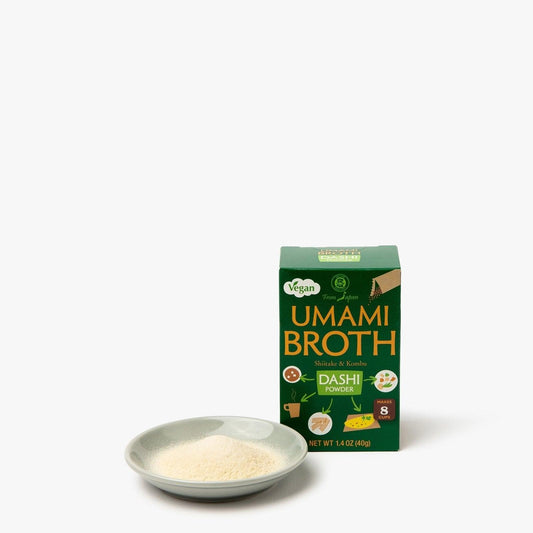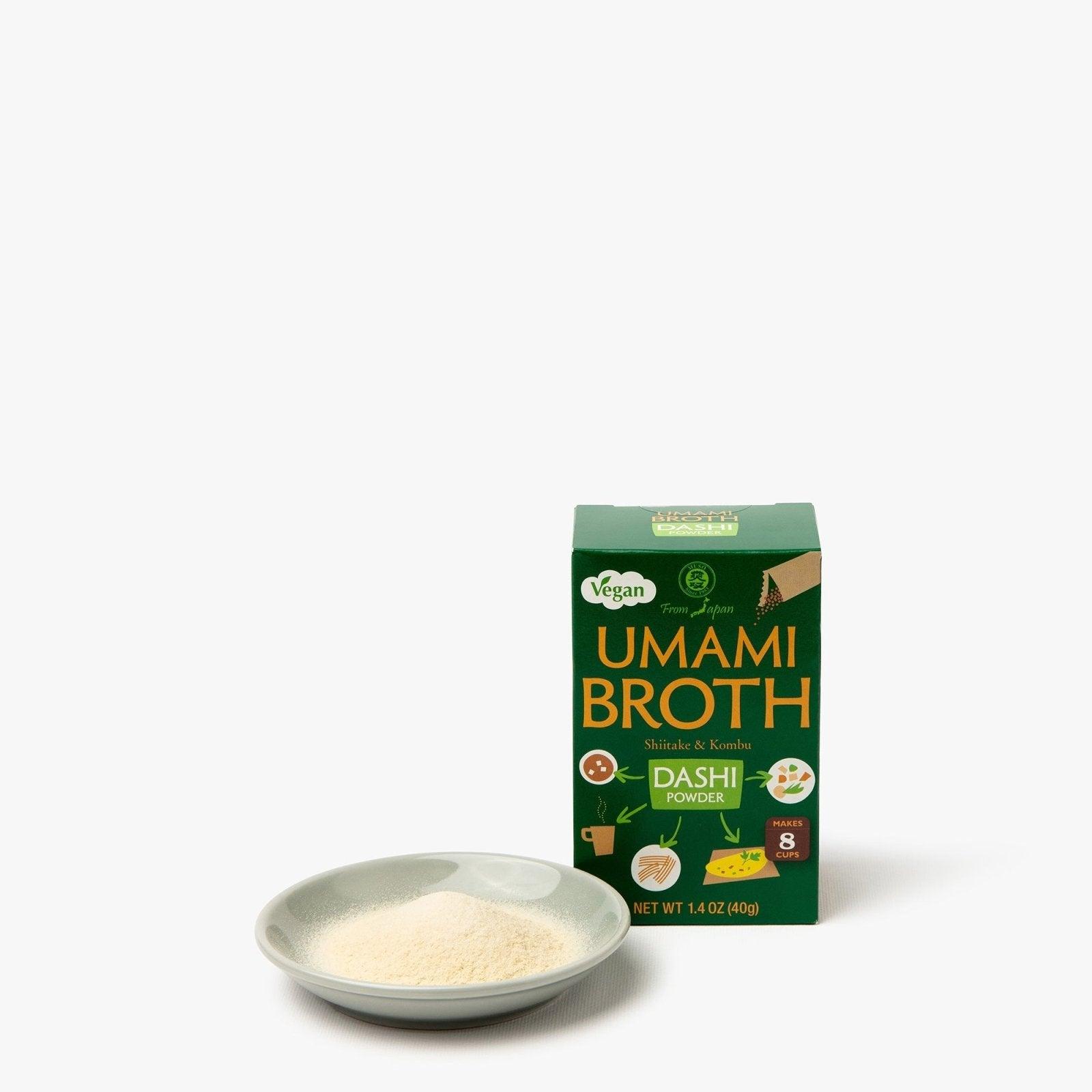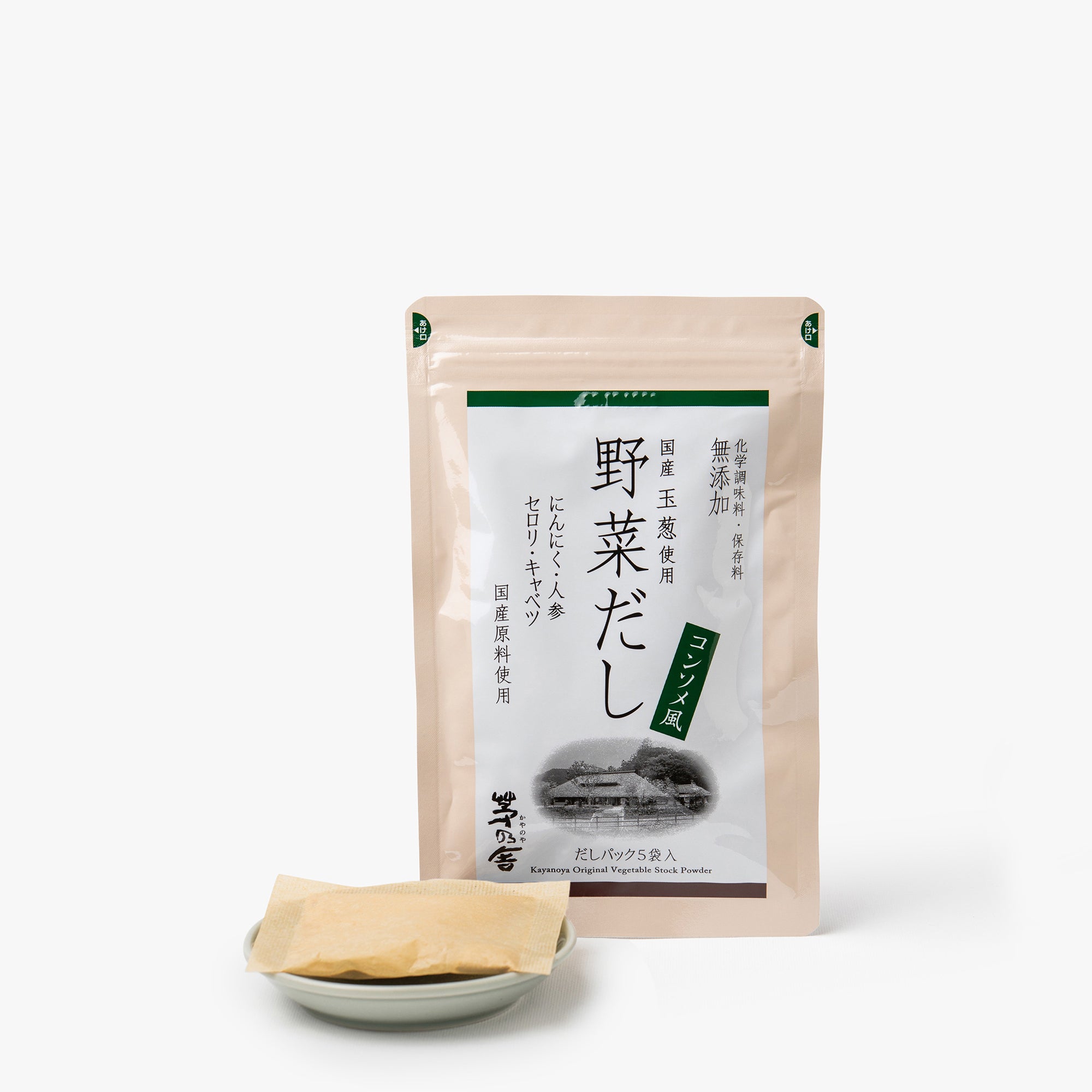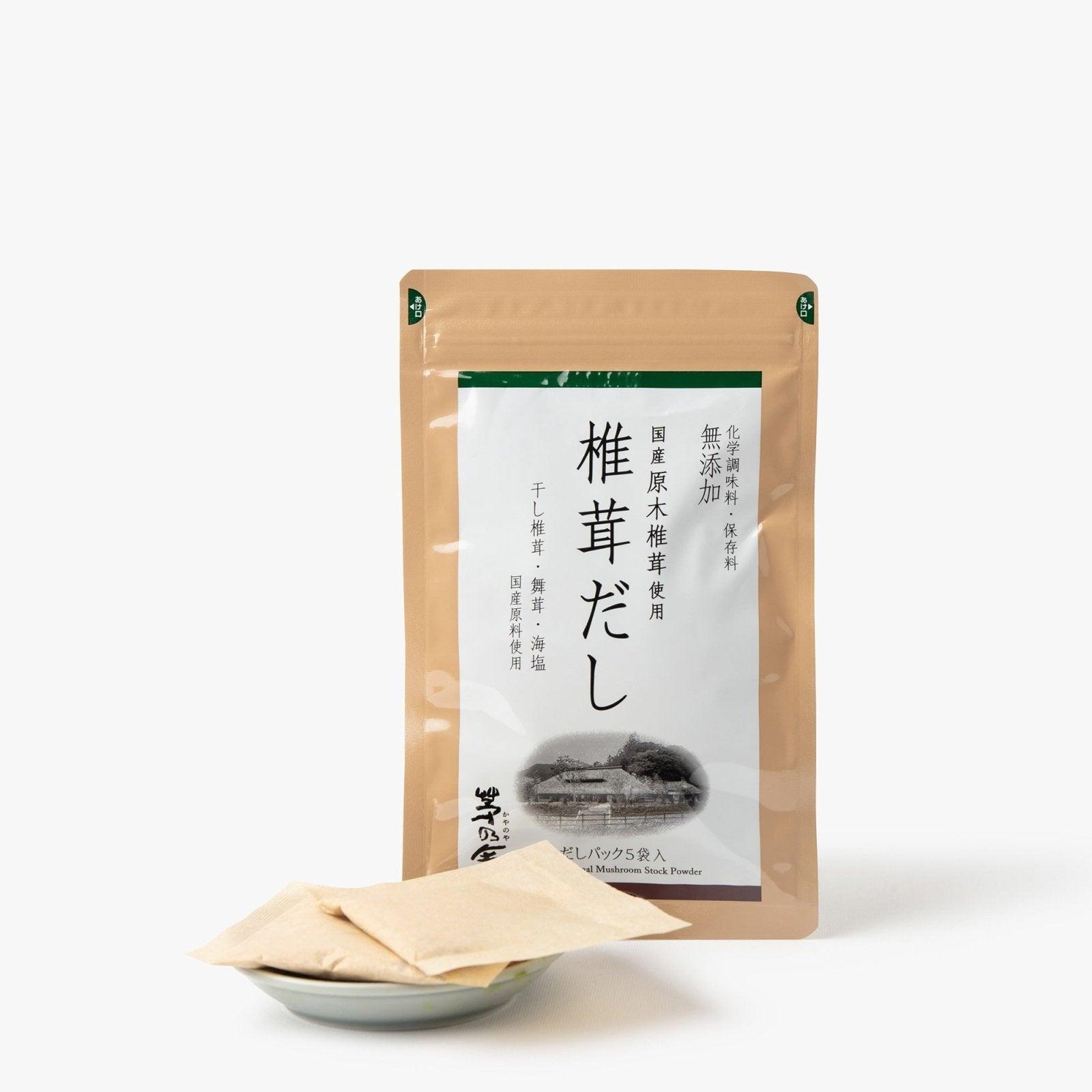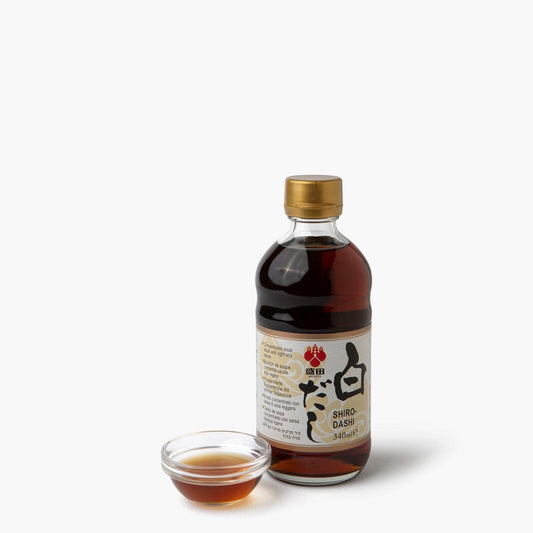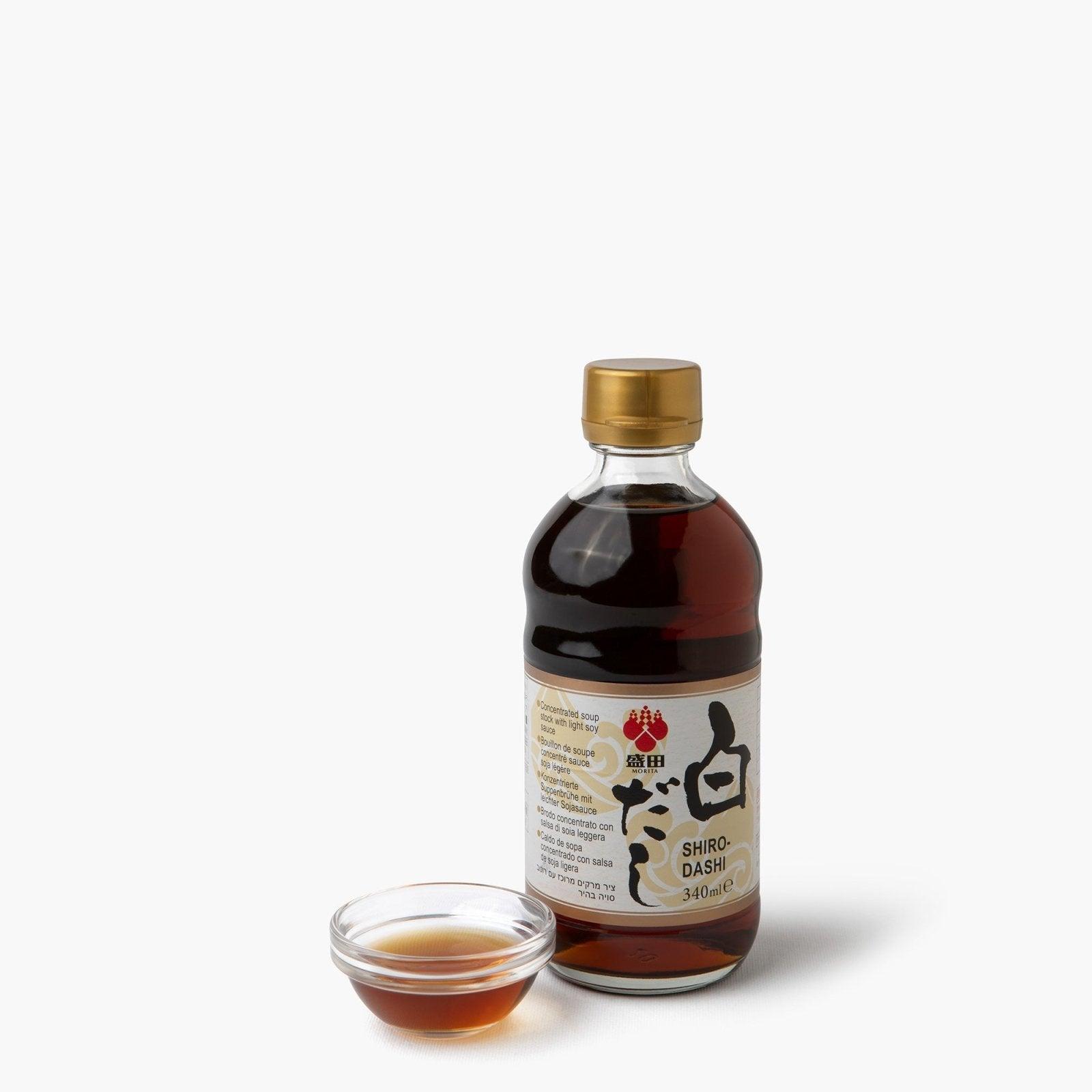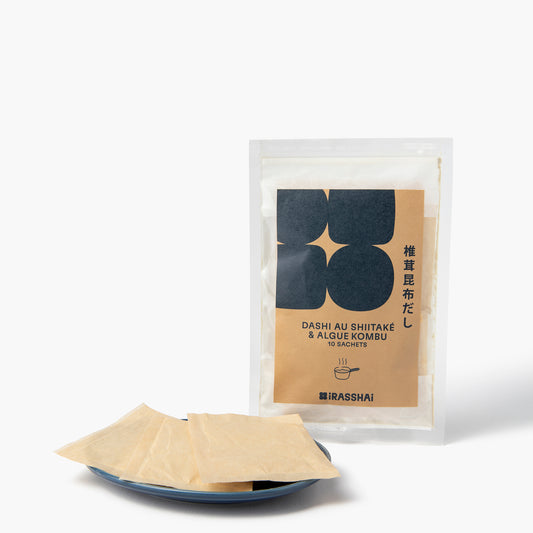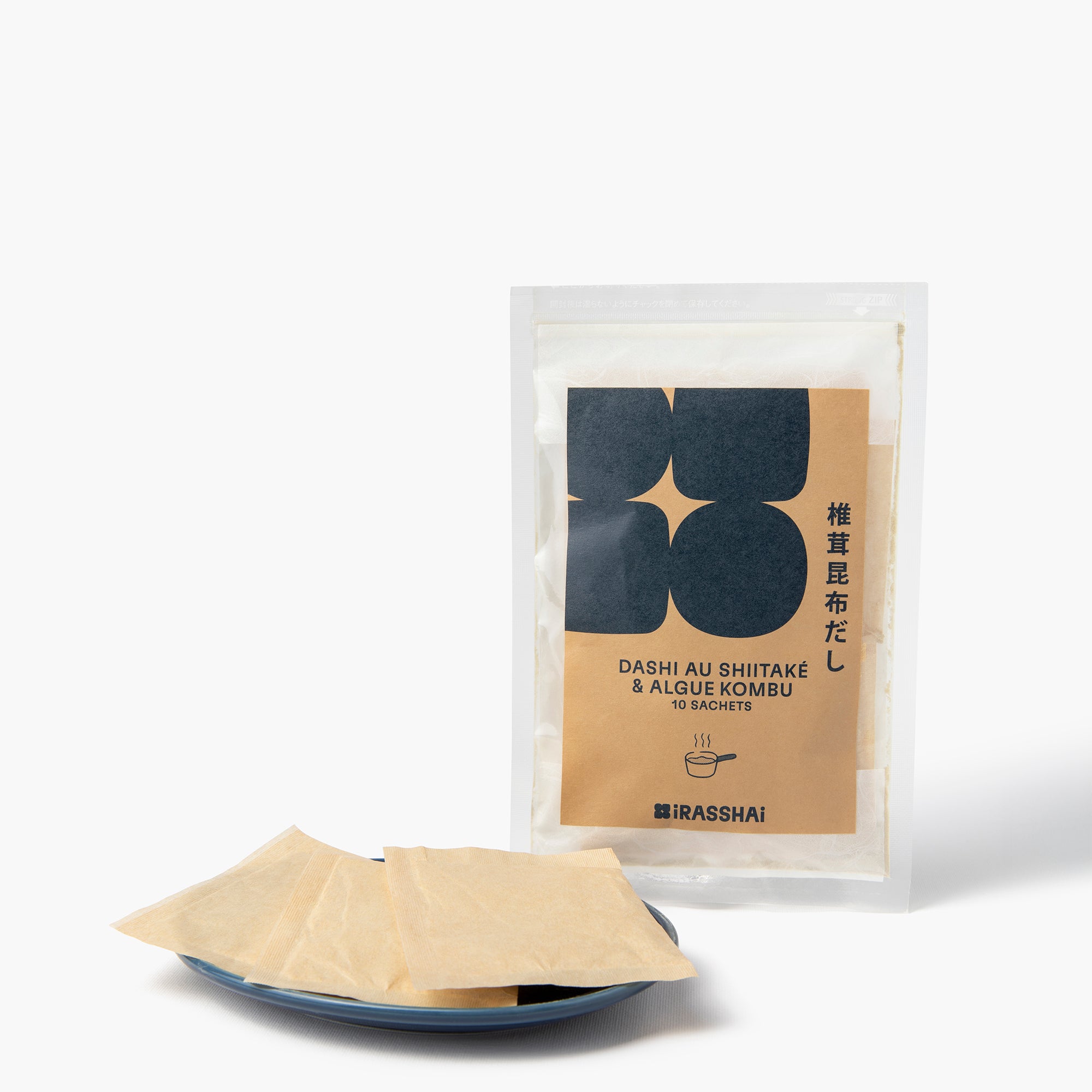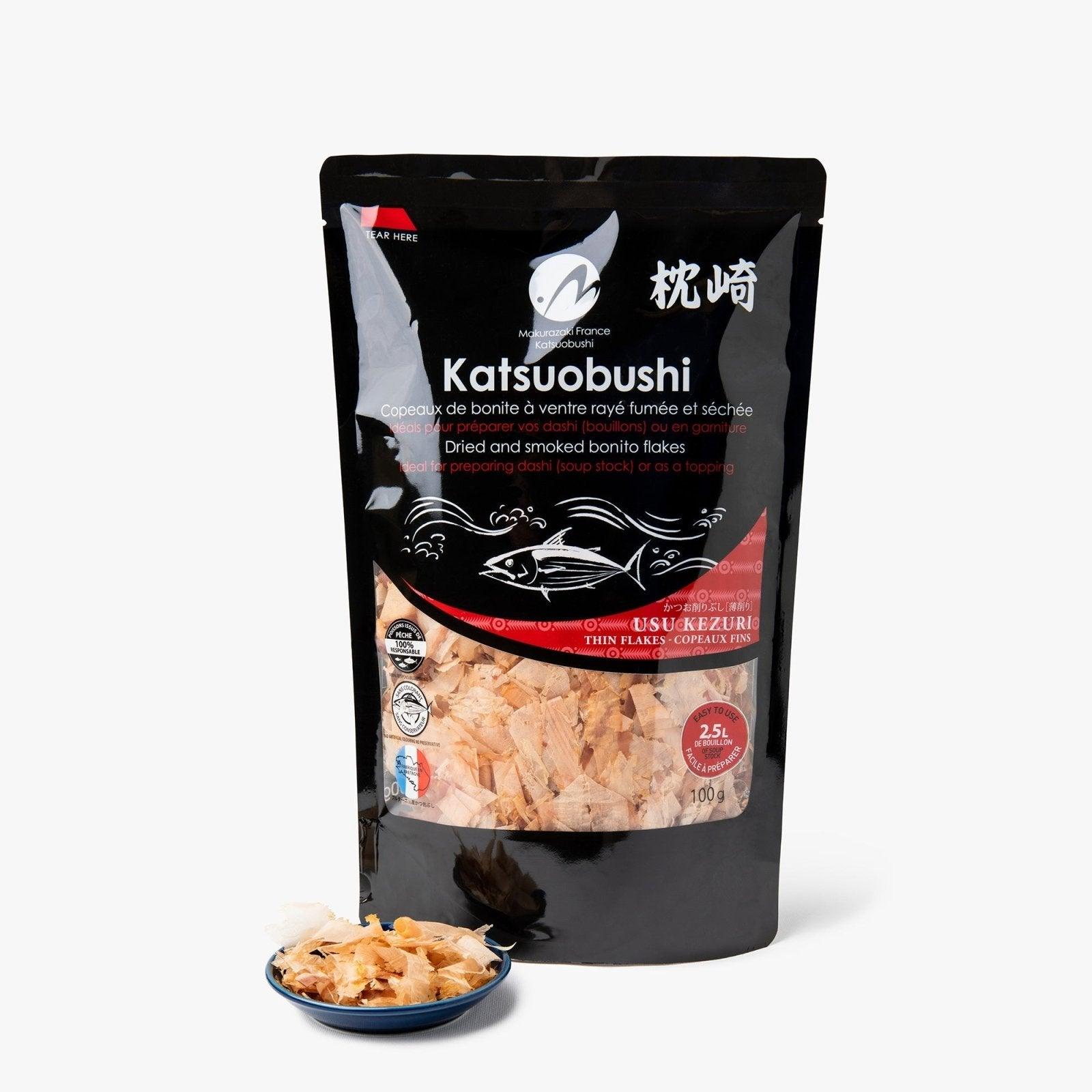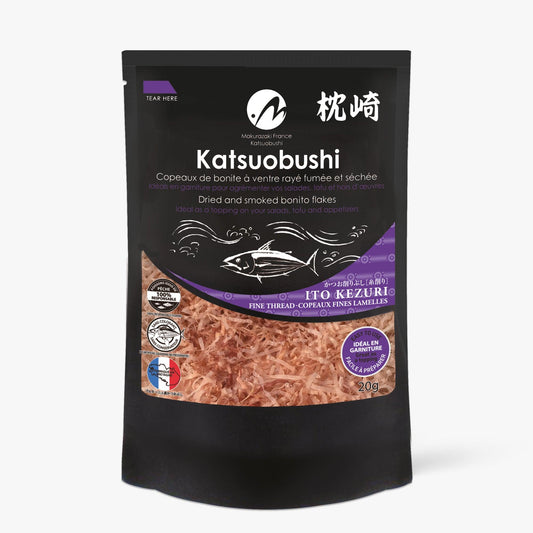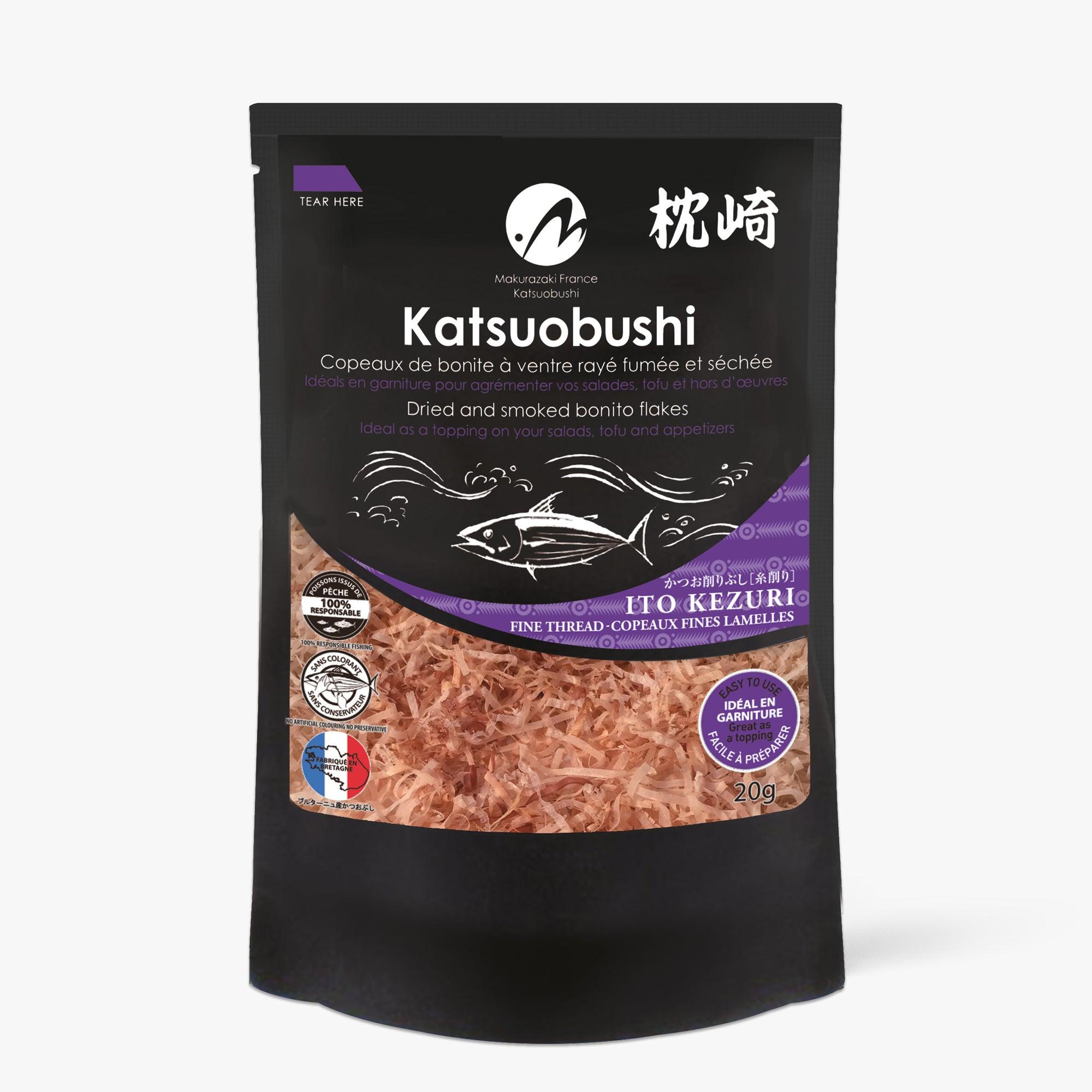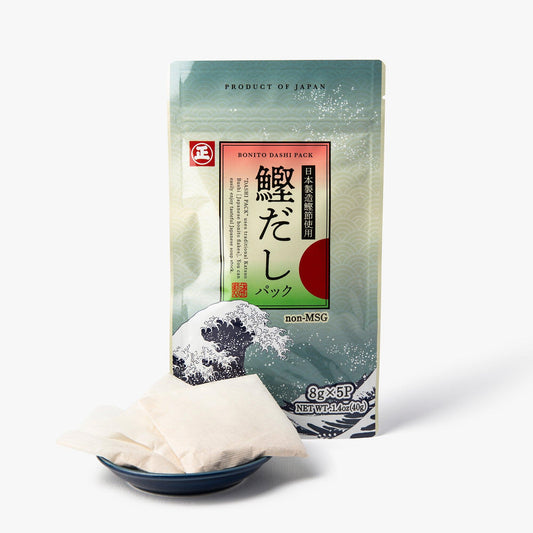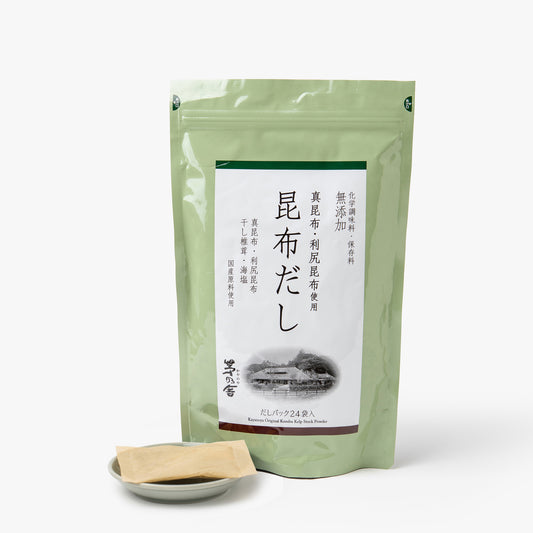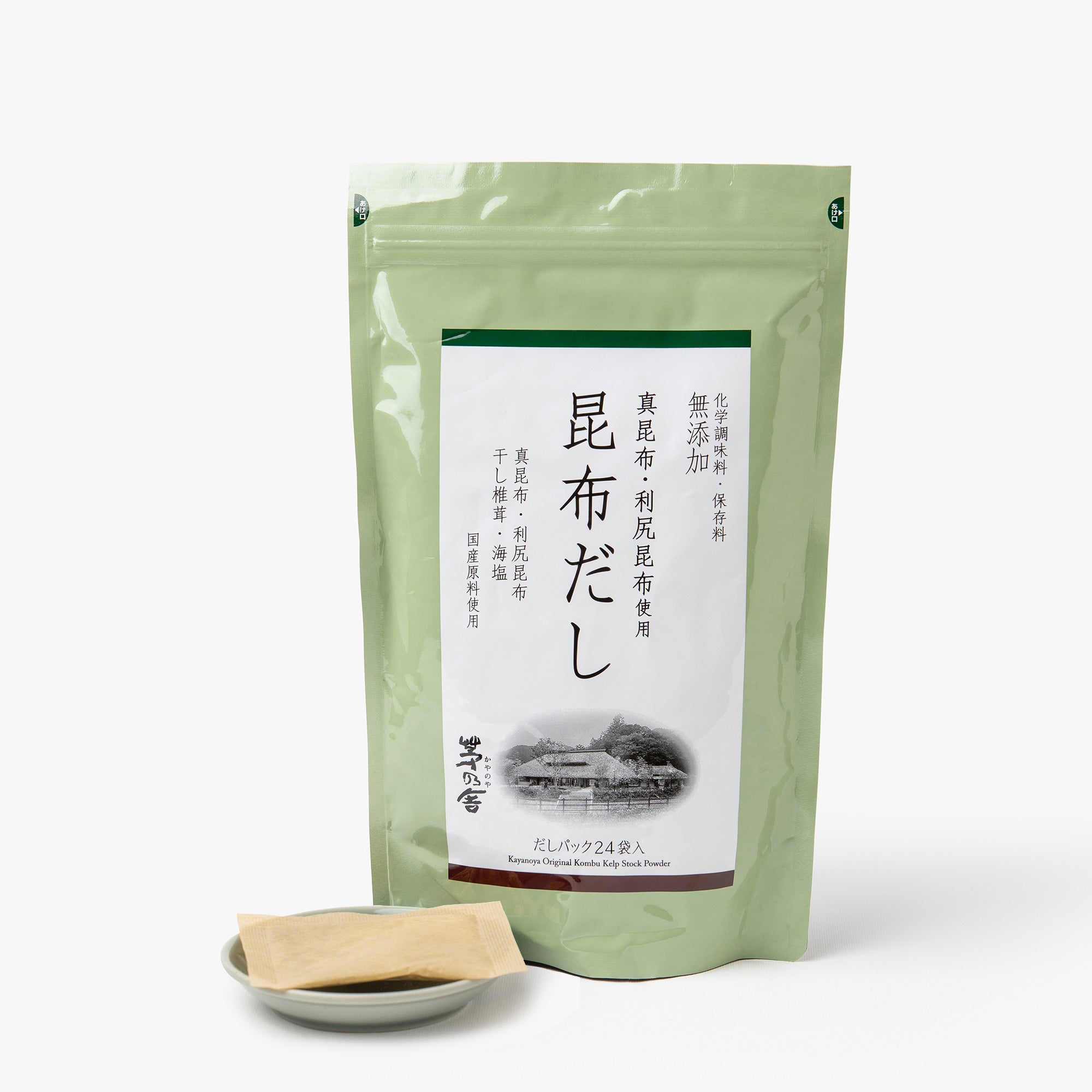Find out more about dashi
What is dashi?
Dashi is a basic broth in Japanese cuisine. It is made from umami-rich ingredients such as kombu (seaweed) and katsuobushi (dried bonito flakes), which give it a deep, complex flavor. Dashi is used to flavor a variety of Japanese dishes, from soups and sauces to noodle broths.
What is katsuobushi?
Katsuobushi is a key ingredient in the preparation of dashi. It consists of dried, fermented and smoked bonito flakes, used for their intense umami flavor. Katsuobushi is also often sprinkled over dishes such as okonomiyaki or takoyaki to add a rich, slightly smoky flavor.
What role does dashi play in Japanese cuisine?
Dashi plays an essential role in Japanese cuisine as a base for many preparations. It adds a depth of flavor and umami balance that enhances the flavors of ingredients without overpowering them. Dashi is used in such varied dishes as miso soups, noodle broths (udon, soba), and even in certain sauces.
What ingredients are needed to make dashi?
The main ingredients for traditional dashi are kombu (seaweed) and katsuobushi (dried bonito flakes). There are also variations using dried shiitake mushrooms or dried sardines.
To prepare homemade dashi, start by soaking kombu in cold water for about 30 minutes. Then slowly heat the water without boiling, remove the kombu just before boiling, and add the katsuobushi flakes. Leave to infuse for a few minutes, then strain to obtain a clear broth.
What's the difference between kombu-based dashi and katsuobushi-based dashi?
Kombu-based dashi offers a milder, more subtle umami flavor, while katsuobushi-based dashi is richer with smoky, salty notes. Often, the two are combined for a balanced dashi.
How to use katsuobushi
Katsuobushi is mainly used to prepare dashi, but can also be sprinkled directly onto dishes as a garnish. It adds an intense umami flavor and a light texture.
How to store katsuobushi?
Katsuobushi should be stored in a cool, dry place, preferably in an airtight container. Once opened, it should be eaten quickly to enjoy its freshness.
Can dashi be replaced by another broth?
Dashi is difficult to substitute because of its distinct umami flavor. However, for alternatives, some use vegetable broth with miso or shiitake mushrooms to approach the complexity of dashi.
How to use dashi powder
Powdered dashi is a practical alternative for making stock quickly. Simply dissolve the powder in hot water according to package instructions to obtain instant dashi, ready for use in a variety of recipes.













